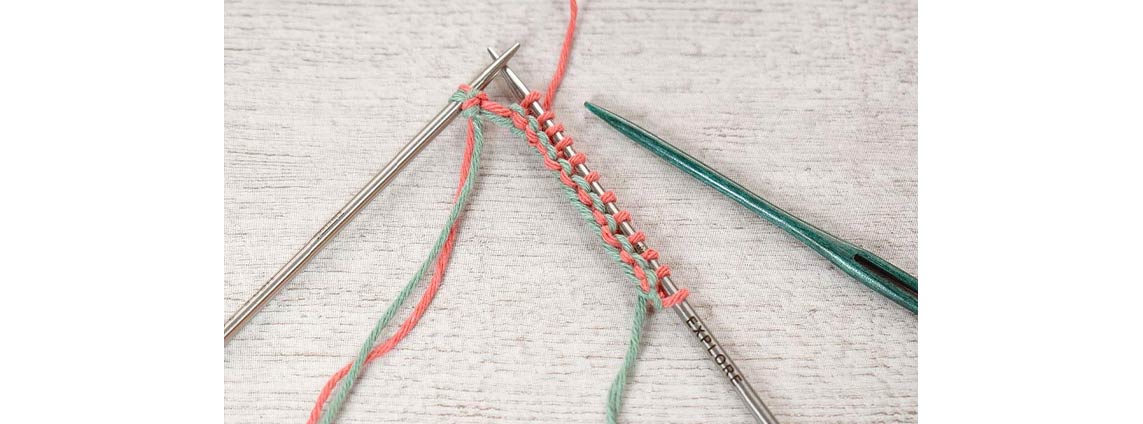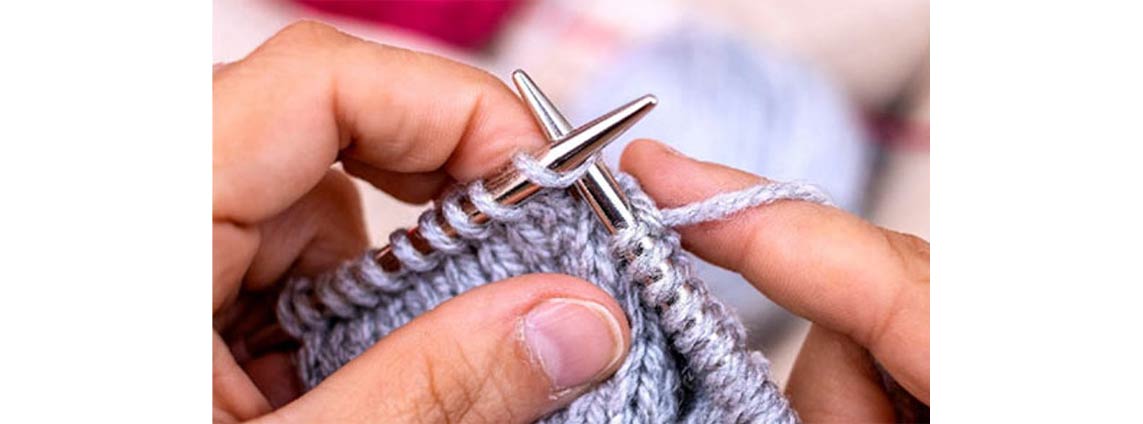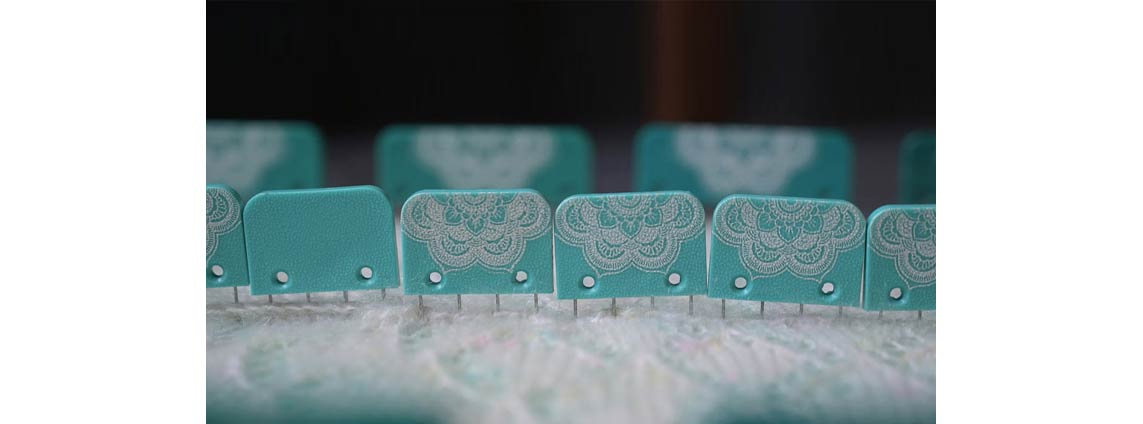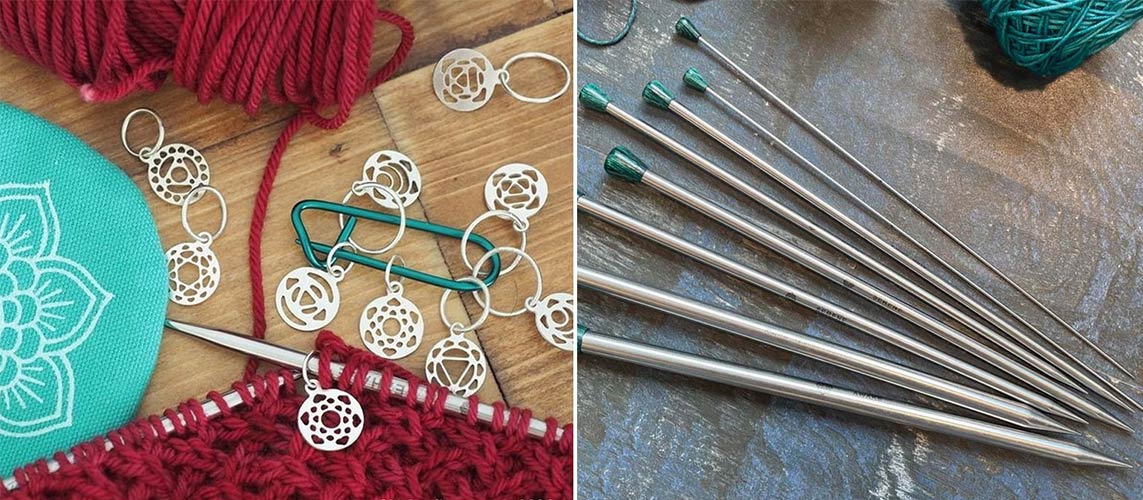Knitting a cardigan is a very easy step into the world of garment making. A cardigan can be knit with any knitting needles and yarn. Single-pointed needles are a classic pair of knitting needles that are used for various projects including cardigans. It gives an opportunity to knit your cardigan in pieces and then seam them together as a masterpiece.
Once you have learned to knit (and purl), cast on stitches, cast off and weave in yarn ends, we say –“Go for it”. We are here to help you knit your first cardigan with single-pointed needles. Even if you are an advanced knitter who has never knit a cardigan in fragments then this guide will walk you through the steps. If it's your first time knitting or you want a refresher, check out our guide on knitting with single-pointed needles.
Knit a Gauge Swatch
Knitting a gauge swatch is the first step for any knitting project. Even if you have a pattern in hand, you need to make a swatch with the yarn and knitting needles mentioned. Knitted garments are designed to fit a body, so you need to get an accurate gauge so they'll come out the size the designer intended. The pattern designer will mention the gauge you must achieve for a similar look. For a cardigan knitted in pieces, the gauge is different for the fragments. It is best that you knit separate gauge swatches for the sleeves and particular parts of the garments.
If you are not following a pattern and designing your cardigan in your design, start with a gauge swatch. The swatch will give an idea of how the knitted stitches will look like and if there is a need to alter the needle size of yarn weight. You can also calculate the quantity of yarn needed by marking a section of yarn and then unravelling it.
Knit a 10 cm square swatch with the same knitting needles and yarn you’ll be using for the cardigan. Wash the swatch and block according to the instructions or details on the yarn label with blocking tools. After the square or swatches for each section of the cardigan is dry, take a measuring tape or even a gauge tool. With the needle tip count stitches in a cm or an inch horizontally for the stitch count and vertically for the row count. If you have the same number as the pattern instructs then you have the right gauge. If not, then reknit on a different needle size to get a gauge. If you have more stitches then a bigger needle size and a size smaller if you have fewer stitches. Even if the gauge is different and you love the effect, go ahead with it.
Sizes
For a cardigan, a pattern designer offers the same pattern in multiple sizes. Like the size of all garments, there are S, M, L, XL versions. You can also find gauges along with notes to calculate your measurements.
When designing your own cardigan, you’ll need measurements. If the cardigan recipient is available take a tape measure and note down the measurements. If not, then work with standard measurements with stitch patterns that assist with the fit. Before you go ahead and cast on stitches, make calculations with the gauge swatch. Do factor positive ease as well as negative ease for the perfect fit. Though a seamed garment does hide minor consistencies it will be very difficult to adjust the inches of the knitted fabric.
Essential Knitting Techniques for the Cardigan Project
With your gauge swatch and measurement, you can begin knitting your cardigan. Just make sure to have some knitting basics under your belt.
Slip Knot – The slip knot attaches the yarn to a knitting needle and whenever you begin with a project or even a swatch, you’ll need to make one. The knit forms a loop on the needle counted as the first cast-on stitch.
Cast on – For every section of the knitted garment you’ll need a different method to cast on stitches. The front and back of the knitted garment will require a cast-on that does not stretch easily. For sleeves, the cast-on needs to be stretchy as does the neckline or the base of the cardigan.

Knitting Stitches – In knitting, the basic two stitches are - knit and purl. All stitch patterns are based on these. For your cardigan, you can attempt the basic garter stitch pattern (all rows of knit stitches) or stocking stitch pattern (alternate rows of knit and purl stitches) or textured stitch patterns. For the neckline or the base of the cardigan, a ribbed (2X2 or 3X3) will give a stretchy finish. Our guide on easy knitting stitches will help you knit a lovely cardigan. You can experiment while knitting the gauge swatch and get enough practice for the project.
Increases and Decreases – Increases and decreases are simple knitting techniques to shape the project. Increases mean adding a stitch in comparison to the previous row and decreases mean reducing a stitch than the earlier row. For your cardigan you will need to work this technique for your sleeves but not so much for the body of the garment. The body seams can be adjusted when seaming with a darning needle. There are many methods for knitting increase and decrease. A pattern designer always recommends the best method.
Cast Off / Bind off – Bind off is an important step to end a knitting project even if you are knitting the cardigan in segments. Bind-off means securing your stitches before taking the project off the knitting needles. Like cast on, there are many methods to bind off stitches. Use a technique according to your knitted fabric.

Weave in yarn ends – Every project and pattern demands its own ways to weave in yarn ends neatly. Make sure to have a few tricks. Using a darning needle smaller than the knitting needle size will help you weave in yarn ends neatly. It is recommended that you weave in yarn ends when you’ve finished seaming the sleeves, front and back of the garment.
Blocking your cardigan - Once you’ve knitted your cardigan make sure to wash and block it. The seaming will settle down, the yarn will bloom and you’ll love the knitted fabric after it's finished.

With all the above information, you are ready to knit your first cardigan. Do carry a handy chart of knitting abbreviations and how to read charts and knitting patterns along with knitting accessories such as stitch markers, darning needles, sharp scissors and more. Locking stitch markers will help you with seaming the cardigan too, besides another knitting help.
Explore the Mindful Collection for stainless steel knitting needles and sets. Each needle body carries an inspiring word that helps knitters focus on being mindful. The accessories of the range too are designed for a smooth crafting experience.
Happy Knitting!












